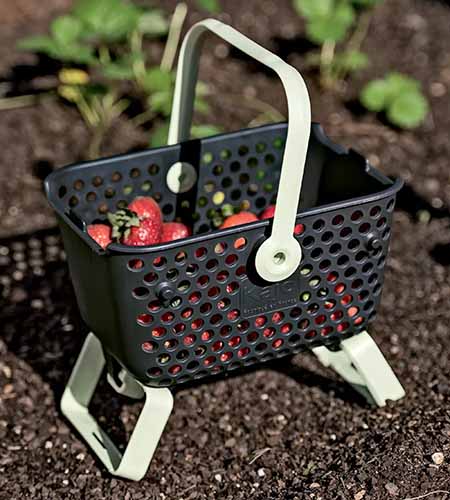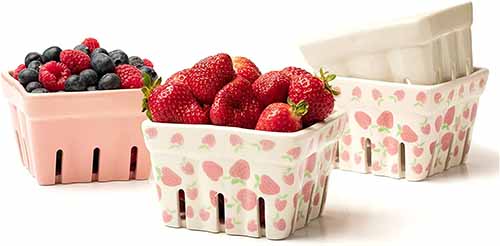Is there anything better than pulling a plump strawberry, warmed by the sun, right off the plant and popping it in your mouth?
And is there anything worse than biting into that fruit and discovering that you picked it too late or too early?
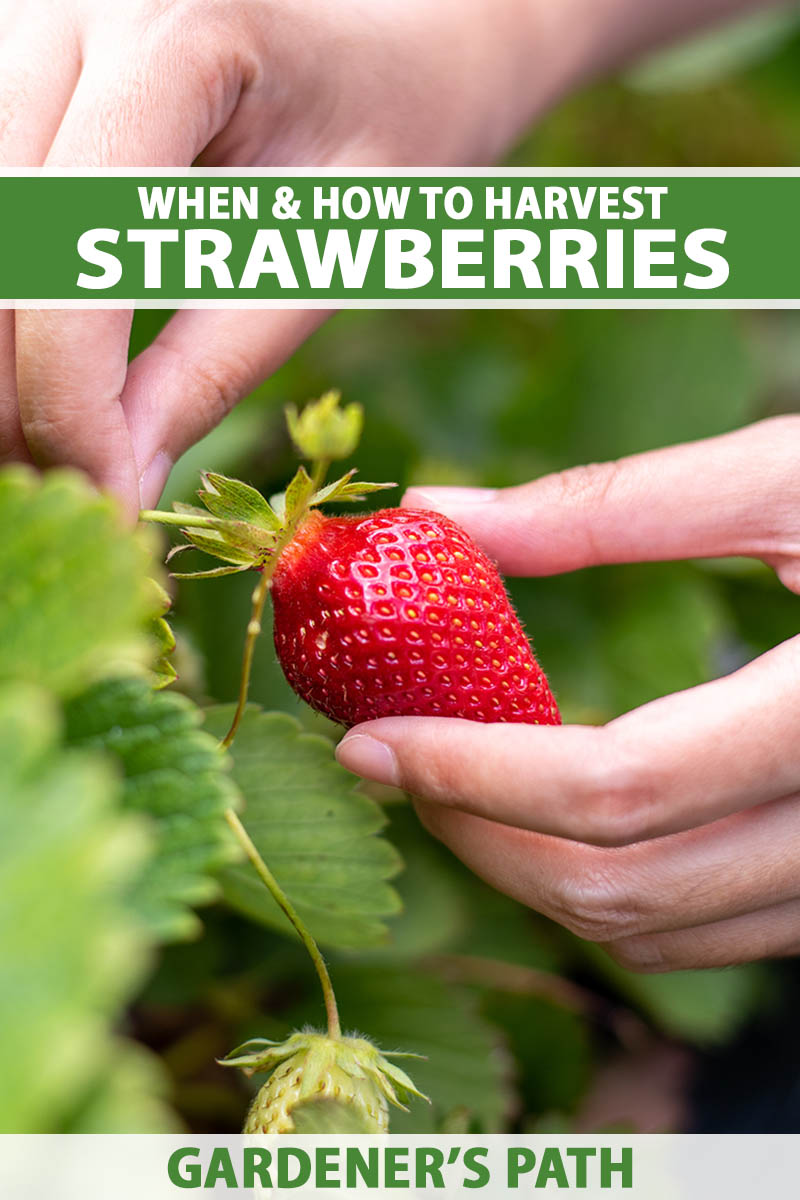
We link to vendors to help you find relevant products. If you buy from one of our links, we may earn a commission.
Strawberries are one of those fruits that are really best right off the plant. The ones at the store rarely compare.
So you gotta figure out when and how to pluck them so you can nab them right during that perfect window of ripeness.
We’re about to go berry picking, so gather your gloves, scissors, and a basket.
Here’s what we’re going to discuss:
What You’ll Learn
Established strawberry plants can give you a lot of fruits throughout the late spring and early summer, but if you aren’t paying attention, you can miss the right window.
If you replant them every spring, then you need to be extra vigilant so you don’t waste the fruits you do grow. There’s no time to waste, so let’s go!
Figuring Out the Right Harvest Date
Every strawberry is different when it comes to how long it takes to mature. Small cultivars tend to be ready sooner than large ones.
Those growing in full sun ripen faster than those in slightly shadier spots. Some cultivars rush to the finish line, while others take their sweet time.
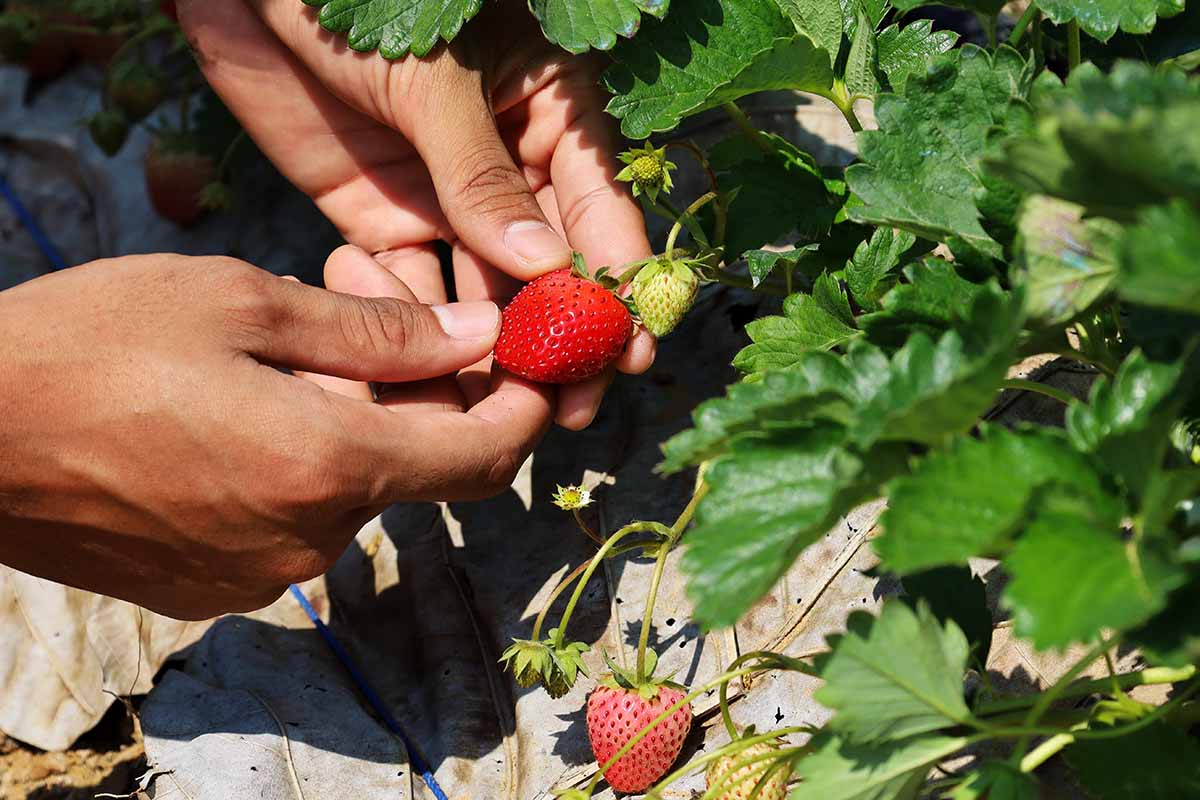
If you know what kind of strawberry you have, you can look up the number of days to maturity and use that as a guide.
But if you don’t know or you can’t rely on the typical timeline – maybe because a late snowstorm set your plants back a week or more – you can use some other indicators.
In general, the fruits are ripe about a month or so after the blossoms are fully formed on the plant.
The berries should be plump and typically dark red, depending on the cultivar.
If you notice birds or other wildlife starting to take a nibble of the fruits, it usually means the strawberries are close to ripe. Now is the time to really pay attention, and maybe put some netting over the plants to protect your harvest.
The stem end should be red, and so should the tips. If the tips of the fruit are still white or green, they’re not quite ready.
The final indicator is the best one: Pick a berry and eat it.
Does it taste like heaven? It’s ready. Look for other berries that match the appearance of the one you ate and harvest them.
Remember, not all berries on a single plant will mature at the same time.
The Different Types of Berries
While it isn’t essential to know what kind of strawberries you have growing in your garden to harvest them, it certainly helps because this gives you an idea of what to expect.
Strawberries are broadly grouped into three categories: day-neutral, ever-bearing, and June-bearing.
The most common are June-bearing, so we’ll discuss them first.
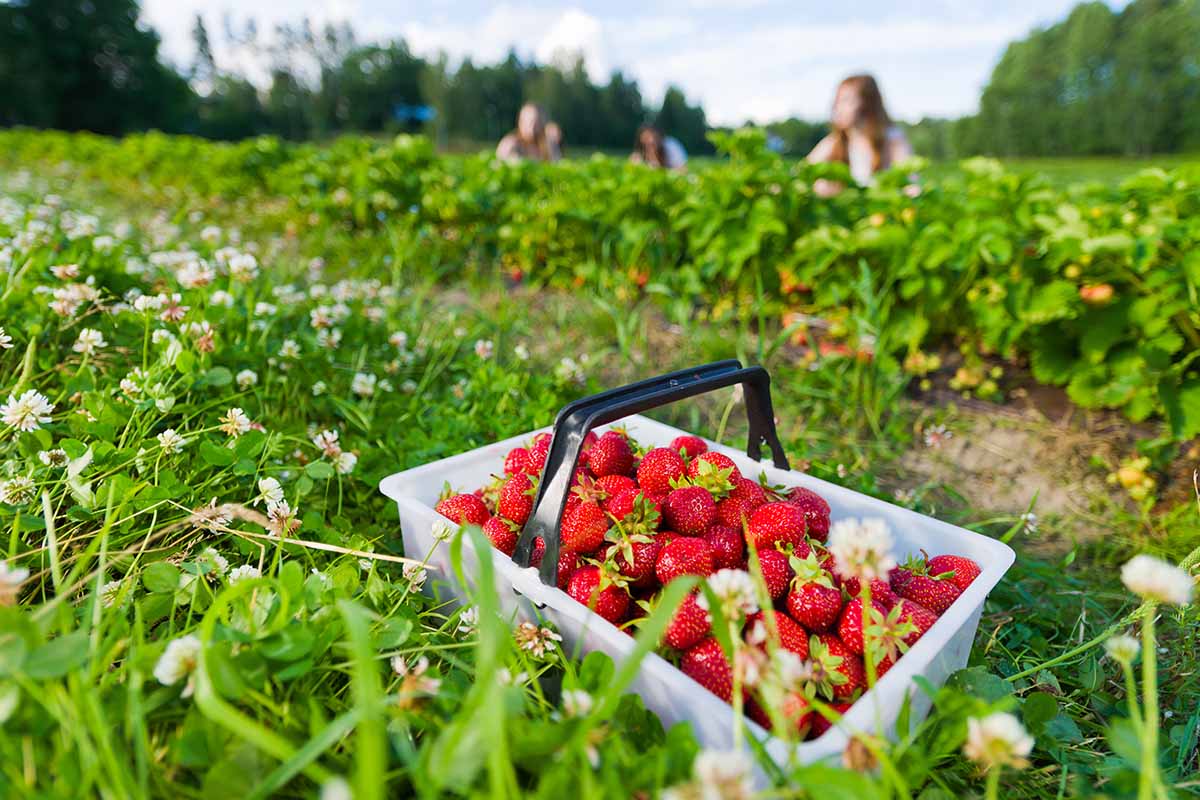
June-bearing types give you a big harvest all at the same time, somewhere around mid-June to early July. The flower buds develop in the previous year as the days become shorter and the temperatures drop, then open in spring to reveal those pretty white blossoms, and later, form the juicy fruit.
Everbearing types produce two crops rather than one that’s ready to pick all at once. You’ll see your first harvest in the late spring or early summer and another in the late summer or early fall, depending on where you live. The flower buds and flowers develop in the same year prior to fruiting.
Day-neutral varieties are starting to gain a lot of ground in terms of popularity. Breeders are working to produce all kinds of new and improved cultivars of these plants, which produce flowers and fruits all summer long.
They’re not influenced by the length of the day like the other two types are, and tend to do best in cooler areas. If you live somewhere that becomes sweltering in the summer, stick with the other types.
Wild strawberries are considered everbearing, so if you’re growing a cultivated “wild” type, expect the plant to produce two large crops during the growing season.
Having said that, they actually produce fruits whenever the weather is nice and they feel like it, so keep an eye out all season long for the fruits.
How to Harvest Strawberries
If a berry is simply making the journey from the plant to your mouth, the way you harvest doesn’t matter too much. Just pull the berry and dig in.
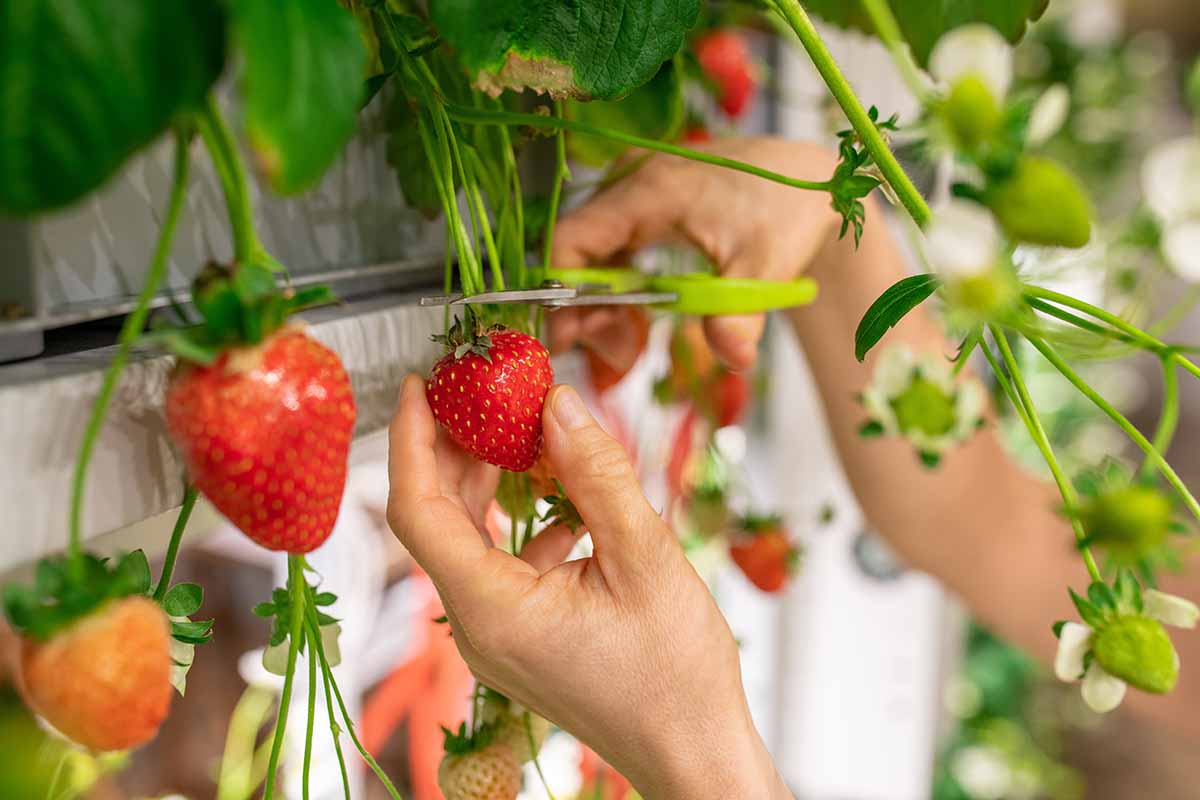
But berries that are destined for the kitchen should be harvested carefully to ensure they’ll store well.
In the morning or during a cool part of the day, head out to your plants with a pair of clean scissors and a container for collecting the berries.
This mini mod hod that’s available at Gardener’s Supply Company makes harvesting much easier because it can hold your fresh berries out of the dirt and transitions easily to the sink for washing time.
Snip each berry off just above the calyx (the green cap) about a half-inch up the pedicel (the stem that attaches to the cap). If you pull the berry away from the calyx, it will rot quickly – best to just eat those straight away.
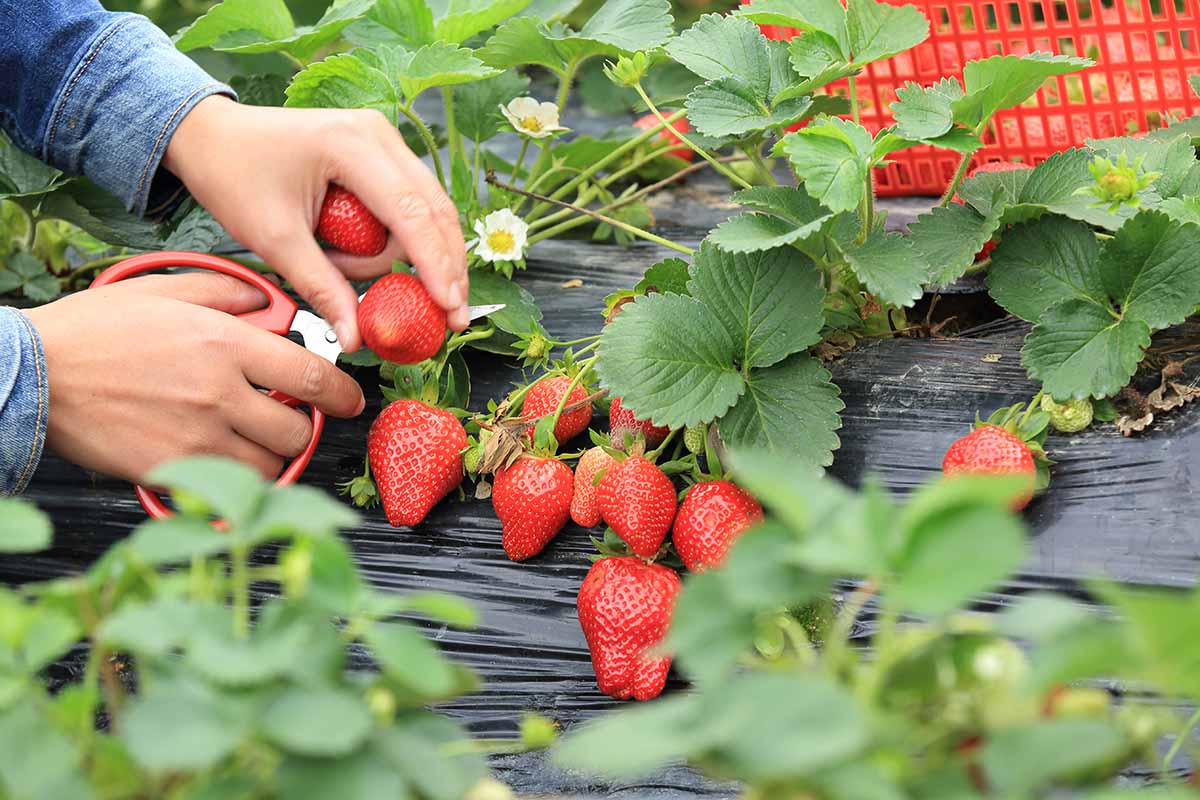
Don’t forget that you should wash your berries before eating if you use any type of spray on your plant. However, don’t wash them until you’re ready to eat them. Washing makes them deteriorate faster.
To make washing and storage easier, you might want to use a berry basket. Next time you buy some berries at the store, save that little green container for your home harvest.
Or go a the cuter (and much sturdier) option and pick up some stoneware harvest bowls at Wayfair.
Farmhouse Ceramic Berry Basket
The berries on a wild strawberry plant go off extremely fast, so you need to be ready to grab them as soon as they ripen if that’s what you’re growing.
They don’t store well, either. I find the best strategy for harvesting wild strawberries is to head outside with a cup of iced tea and transfer the fruits from the plant directly into my mouth.
Snag Your Berries At the Peak of Perfection
There’s a narrow window of perfection and you don’t want to miss it. Heading out to the berry patch to discover rotting fruits is heartbreaking.
The same goes for biting into a fruit that is too young. Your mouth is watering and you’re imagining that first juicy bite, only to be disappointed by a firm, bitter fruit.

Instead, follow our tips so you can enjoy the fruit of your labor at its flavorful peak!
What kind of strawberries are you growing? What are your favorites? Let us know in the comments section below!
Interested in taking your strawberry crop to the next level? We’re here to help! Check out the following guides:
